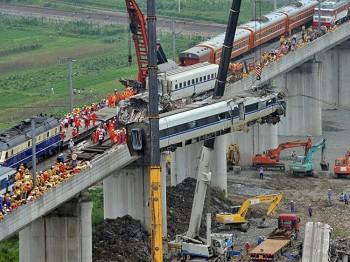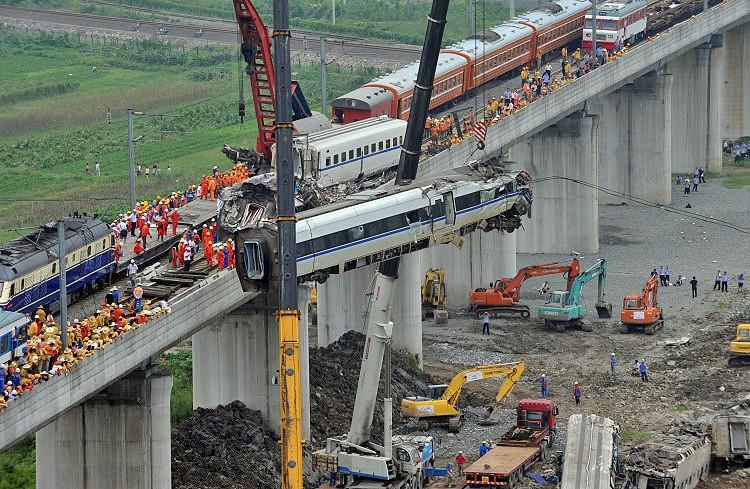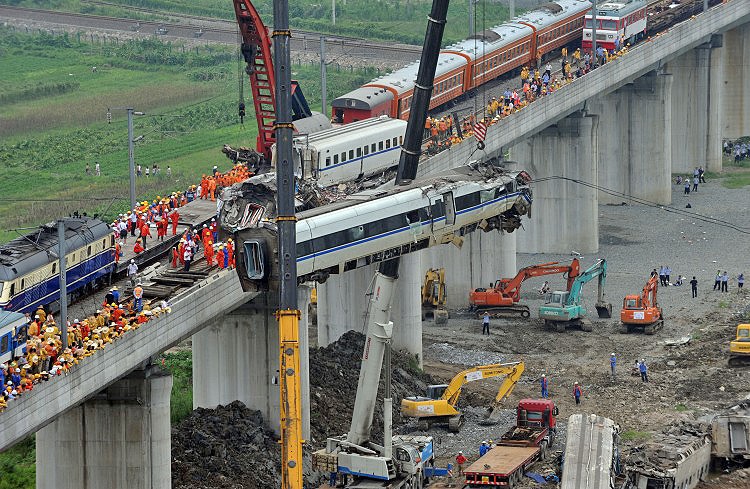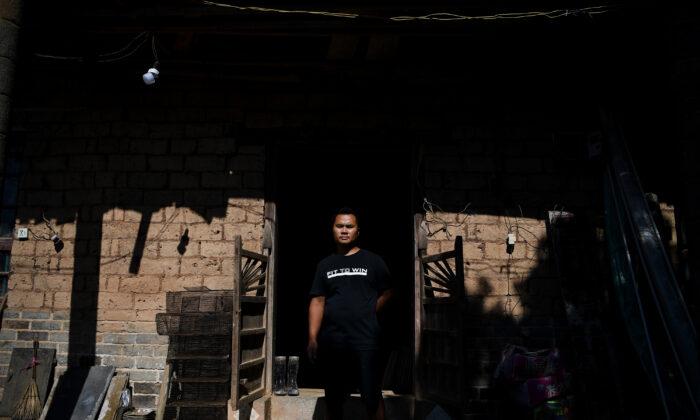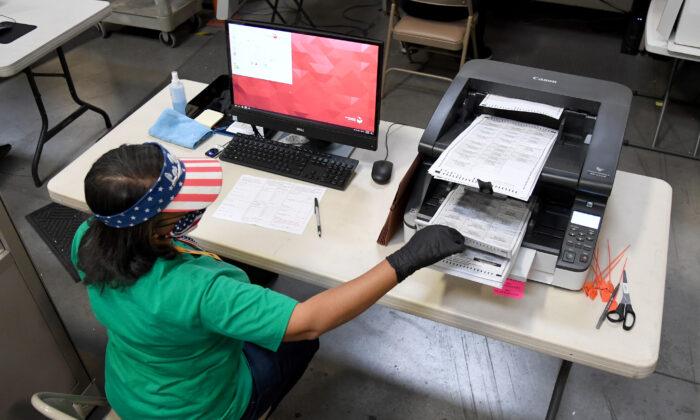Chinese authorities have blamed a lightning strike as the cause of bullet train D3115 losing power near Wenzhou in China’s southeastern Zhejiang Province, which then led to the fatal collision when another bullet train rear-ended it.
But people familiar with China’s railway system say they were not surprised that such a crash had happened. Some say the crash on the night of July 23 has exposed the serious operational and management problems in China’s high-speed rail system and a lack of concern for public safety.
Negligence
According to many experts and media analysts, the accident was caused by human errors and negligence, including signal system failure and scheduling problems.
A quality control engineer, using the alias Wei Ming, who once worked as a railway designer in China, told The Epoch Times that the collision happened largely because of operational problems.
“Railway lines are divided into sections known as blocks, and only one train is allowed in one block at a time under normal circumstances. If a train stops, the automatic ‘block signal system’ will signal the train behind it, and it will automatically stop,” Wei said.
According to Wei, if this block signal system ever fails, the shift operator at the central dispatch would use a manual alert system to alert the second train. And if this still failed, the front train [operator] could still alert the approaching train by wireless communication.
“This is the most basic operation requirement in a railway system,” Wei said.
Professor Seiji Abe of Kansai University in Japan, an expert on railway safety, agreed. He said such a rear-end collision is almost unimaginable in Japan and Western countries.
“This has to be related to serious safety system problems in [China’s] railway industry,” Abe told Japanese media.
Some media pointed out that a scheduling error may have also contributed to the collision, as the second train, D301, that rear-ended D3115, was actually scheduled to run ahead of D3115, according to the China Railway online train schedule.
In addition, emergency escape equipment did not function, further putting survivors lives at risk. Many survivors said they could not break the windows because the emergency hammers did not work, and many people were trapped inside the cars after the collision.
Fast-Track Development
China’s monumental high-speed rail system has proceeded at an unprecedented pace over the past decade. Led by Liu Zhijun, the former Minister of Railways, the regime’s ambitious plan has been to transform China’s national rail network, and at the same time to turn China into the global leader of high-speed rail technology by integrating new methods from other countries with its own.
Chinese railway officials have often commented about China’s railway surpassing Japan’s and Western countries’ in speed and quality, saying China had digested foreign technologies and quickly re-innovated to create China’s own, better version.
One of the two trains involved in the collision was based on models of Canada’s Bombardier, and the other was modeled after Japan’s Kawasaki Heavy Industries.
The automatic signal control system, however, was developed by China, according to Chinese and foreign media reports.
Japanese experts have stated that China has not yet mastered the ability to integrate technologies from multiple countries and, by insisting on doing so, has turned things into a mess.
In April 2010, the director of Central Japan Railway Company openly criticized China’s railway authorities for neglecting safety, Japan’s Sankei Shimbun reported.
Last February, Du Junxiao, editor of the Shaanxi bureau of People’s Daily, quoted a retired railway engineer, saying he would never in his life take a Chinese high-speed train.
Du also quoted another engineer who worked for China Railway Engineering Corporation as saying: “We really could not guarantee the quality of our construction work. For some projects, the steps of survey, design, and construction were all done at the same time. Some projects were handled even worse and didn’t even go through these three steps.”
Next...Accident no Surprise
Accident no Surprise
Several people who worked in China’s railway system said they were not surprised that such a serious train crash has happened.
A man working for the Guangzhou Railway Bureau told The Epoch Times on condition of anonymity that his sister is a crewmember with the Guangzhou-Shenzhen high-speed rail. She told him that frequent small accidents have happened and were hidden from the public, but this collision was too big to hide. “It appeared to be accidental, but in fact it was inevitable,” the man said.
A former employee at the administrative department of the Guangzhou Railway Bureau, who also asked to remain anonymous, told The Epoch Times that China’s high speed rail is destined to be accident-prone because of the low standard infrastructure coupled with poor design and technology.
“Fundamentally [the high-speed rail] is not capable of this high speed operation, yet the system is forced to operate at high speed. This is why accidents happen,” he said.
Inconvenient Evidence
Even though authorities have blamed a lightning strike for the tragedy, they also fired three low and medium-ranking officials, a very common measure taken by the Chinese regime to appease public anger and appear as if taking the blame when a disaster of national scale takes place.
But true justice, preceded by an open investigation, never happens in China. Inconvenient evidence is generally destroyed, and witnesses silenced.
A mere two days after the collision, railway authorities buried the wrecked train cars, something unthinkable in most countries, which also prompted Chinese suspicion that authorities were trying to cover something up.
The Chinese public still feels uncertain as to how many dead and wounded there really were.
The way this disaster is being handled reflects how the system in China works, and such practices are also very common in other departments of the Chinese state, according to Radio France International (RFI).
A series of construction accidents in China have also been reported recently, including the collapse of several bridges and a residential building, are all evidence of shoddy construction and corrupt officials who look the other way when it comes to safety.
The new showcase high-speed rail connecting Beijing and Shanghai has had several incidents of malfunctioning, including power outages, since its debut on June 30.
These incidents all demonstrate that the state’s various departments only care about their immediate accomplishments and merits and much less about safety, RFI said.
The train crash has also sparked an anger and concern over construction safety in China.
One Chinese blogger said, “With so many corrupt officials, eventually we are all going to die on the roads, bridges, high-speed rails, and in the high-rise buildings they build.”
Another blogger said, “The frequent construction accidents have shown that the government’s morality and corrupt system have also derailed, in addition to the bullet trains.”
[email protected]
